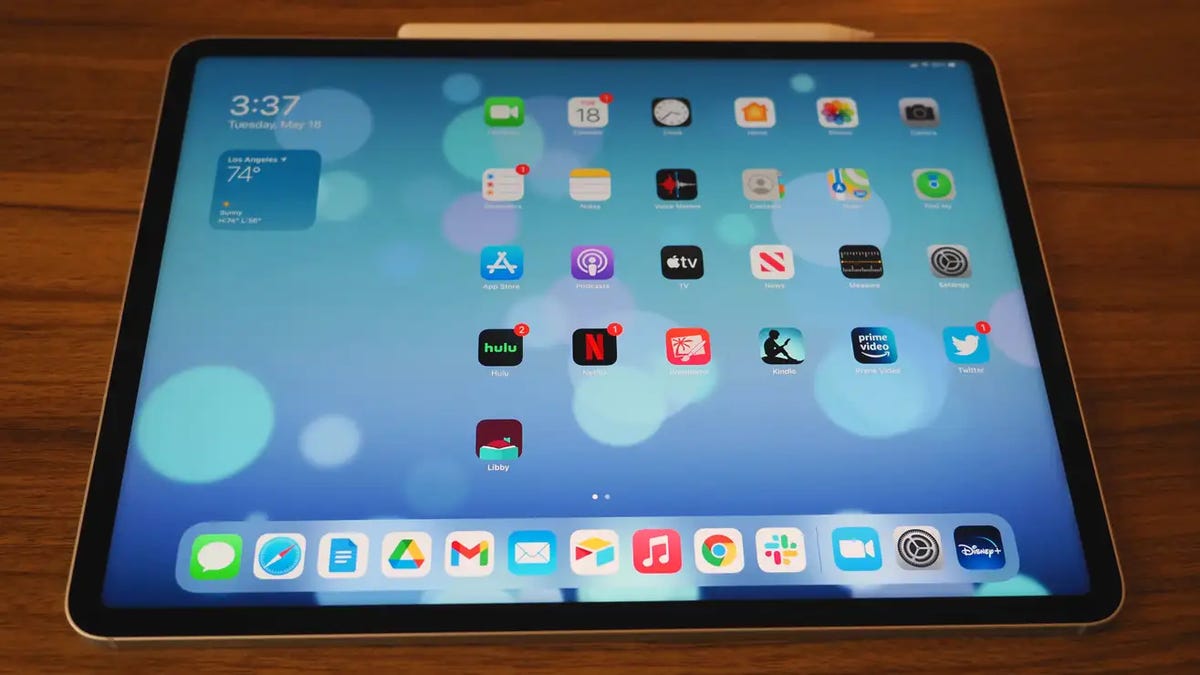

Adata is a company best known for its SSDs, DRAM modules, and peripherals, which it markets under its gaming moniker XPG, but the company has also recently stepped into the world of gaming laptops. I loved the first ever XPG gaming laptop, impressed by the choice of components, the mechanical keyboard, and the way its thermal design kept everything nice and cool. XPG set the bar so high with its first laptop that its latest one, the XPG Xenia Xe Gaming Lifestyle Ultrabook, has me scratching my head.
It’s the size of a slim and light gaming laptop, but everything else about it is closer to a productivity laptop. Besides the spaced-out keys on the membrane keyboard, this XPG Xenia is configured with an Intel Core i5-1135G7, Iris Xe integrated graphics, 16GB of memory and a 1TB SSD. They’re honest specs with enough oomph to export spreadsheets, edit a little video, or even render some 3D images, but let me be clear: The XPG Xenia Xe is not a gaming laptop.
Can It Run Crysis?
To be fair, the new XPG can handle games like Overwatch, Shadow of the Tomb Raider, and the other games that we usually benchmark when we test gaming laptops. But what we initially saw in our frame rate testing when we first got our hands on Intel’s mobile Tiger Lake processors wasn’t the big, impressive fps leap with integrated graphics Intel originally boasted about. To get anywhere close to 50 frames a second, you have to turn the graphics settings to low and set the resolution to 720p. That’s far from the 1080p gaming Intel touted with its Iris Xe graphics for mobile processors.
G/O Media may get a commission
That doesn’t mean Iris Xe isn’t impressive. The improvements Intel was able to make to its integrated graphics are eye-catching. It surpasses AMD’s integrated Vega graphics, and it can hang with Apple’s M1 chip, but it’s still no match for something like Nvidia’s GeForce MX450, which sits somewhere between the GTX 1050 and GTX 1650 performance-wise. It’s not technically an integrated mobile GPU either, but it’s designed specially for laptops. Putting the GeForce MX450 in this gaming (if you can even call it that) ultrabook would have been a better move for XPG, as it would have been able to handle games better at 1080p on low.
In my testing, Overwatch fared the best with the Intel Core i5-1135G7, maxing out at 47 fps at 1080p on ultra. Moving the graphics settings to low doubled the frame rate, topping out at 160. Total War: Warhammer II got up to 56 fps at 720p on low, where Shadow of the Tomb Raider and Far Cry 5 topped out at 46 and 48 fps, respectively. I was able to squeeze a few more frames out of those games by turning anti-aliasing to the lowest setting possible, but I couldn’t increase those average frame rates any higher.
And even if you wanted to play Overwatch for a few hours on the XPG, I’d mind the CPU and chassis temperatures. This laptop isn’t loaded with fans, which can be a good thing if you aren’t gaming and like your laptops quiet. But local gaming pushes the system up to 97 degrees Celsius (206.6 degrees Fahrenheit) according to the stats I recorded with HWInfo. There also was some thermal throttling according to the stats, though nothing noticeable in-game. You’ll also want to watch where you place your fingers; the sound bar area above the keyboard can get up to 52 degrees Celsius (125.6 degrees Fahrenheit) in some spots. However, the rest of the keyboard area never exceeds 40 degrees Celsius (104 degrees Fahrenheit).
A Better Work Machine
So, if it isn’t a true gaming laptop, then is it a good work laptop? The design is neat and subtle, and doesn’t scream GAMER when you set it down on the table, so that’s a major plus in my book. (It’s also a beautiful silver color, which is another bonus.) Compared to another Intel Core i5-1135G7-powered laptop we reviewed, the Lenovo Yoga 7i, the XPG Xenia Xe ultrabook should be more attractive to anyone who doesn’t want to jump on the 2-in-1 bandwagon.
Raw performance is the same between the two, but if you want to do some 3D rendering or video transcoding, the Xenia was a minute faster in those types of applications—8 minutes, 45 seconds in Blender rendering with the CPU, and 14 minutes, 15 seconds in Handbrake.
In the case of two laptops with nearly identical specs, it could be because the manufacturer has tweaked the CPU frequency or power consumption within certain specifications. I honestly do not know if that is the case here (I peeked in the BIOS and nothing stood out to me), but another likely explanation is that the DRAM in the Xenia is faster than the DRAM in the Yoga 7i: 4266MHz versus 3200MHz.
The Xenia has 8GB of memory and the Yoga 7i we reviewed had 12GB, but just because a laptop has more memory doesn’t necessarily mean it can run certain programs faster if it has a slower frequency.
How the Specs Stack Up
The Xenia also has a better display that’s almost twice as bright as the Yoga 7i at 448 nits compared to 271 nits. It also has a 1080p FHD IPS touchscreen display, with the addition of a Corning Gorilla Glass surface. The display isn’t damage-proof, but it can resist scratches and chips.
The Xenia’s battery life is true to what Adata advertises: up to 16 hours, with an average battery life of 12 hours. The battery in this review unit clocked in at 12 hours and 38 minutes, which is a tad better than Microsoft’s Surface Laptop 4 and two hours longer than the Lenovo Yoga 7i. It also has a good variety of ports: two USB 3.2 Gen 2×1 Type A; two Thunderbolt 4, which also double as USB-C ports; one HDMI 2.0; and one 3.5mm audio port—all the essentials and then some. It weighs 3.63 pounds and is 0.58 inches thick, which are nice dimensions for a laptop with a 15.6-inch display.
If you can ignore the “gaming” designation, the XPG Xenia Xe Gaming Lifestyle Ultrabook actually makes a great productivity laptop. It’s not terribly expensive, $1,350 as configured, but there are cheaper laptops out there with the same or similar specs, like the MSI Prestige 14 Evo. Yet it unapologetically beats something like the Razer Book 13 in battery life and price. The Razer Book 13 starts at $1,200 for 8GB of memory and only a 256GB SSD. It doesn’t have a 1TB option either, just a 512GB version. But if you want that storage capacity you have to get the Intel Core i7-1165G7 version, which goes for $1,700. The XPG Xenia comes standard with a 1TB SSD.
The best way I can describe XPG Xenia Xe is a solidly middle-of-the-road laptop. It’s not flashy, it does what you expect of it, and it holds its own among all the Lenovos, MSIs, and Acers of the laptop world. If you pretend the “gaming” part isn’t in its name, this XPG Xenia Xe makes a lot more sense. If you do want a gaming laptop, though, there are much better bargains.
Source link





